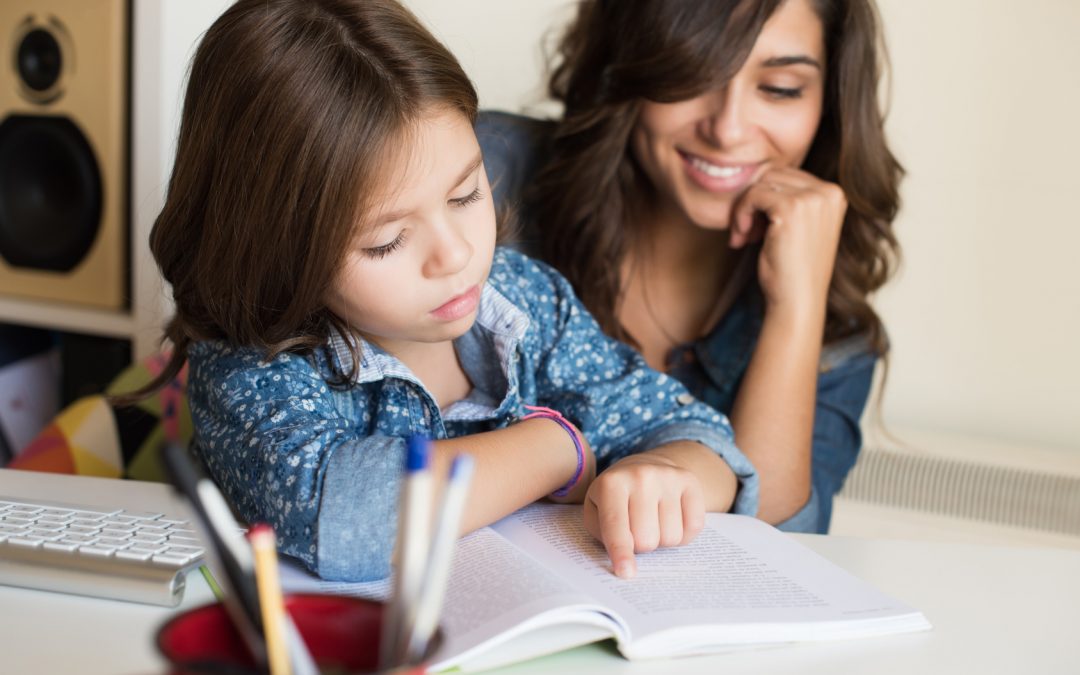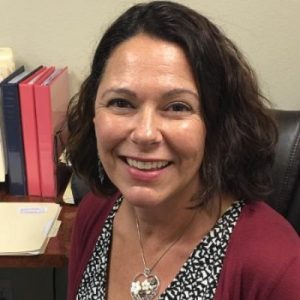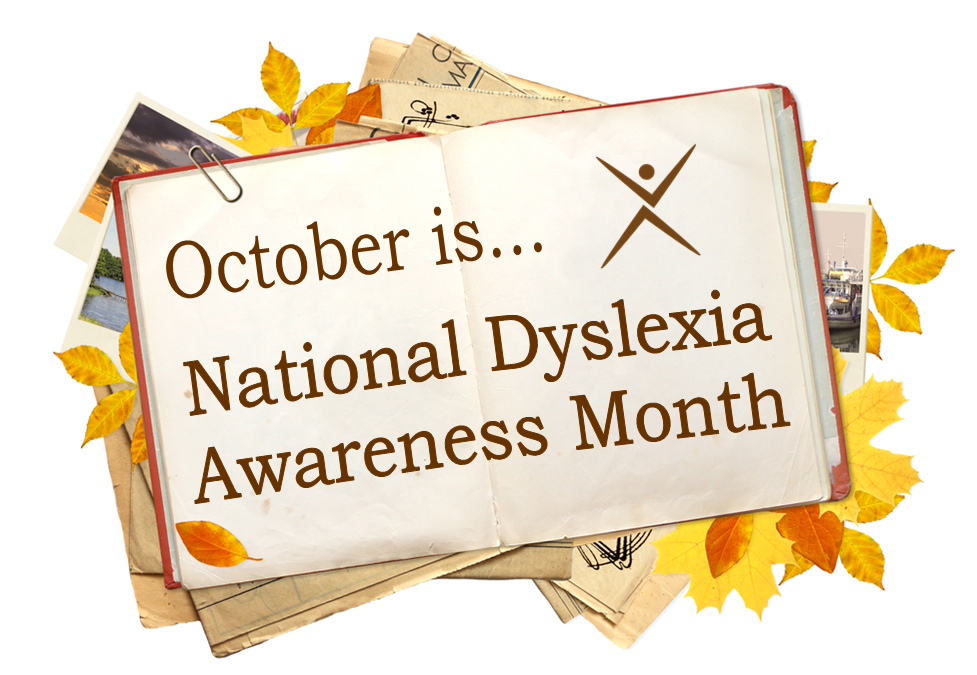
by PRIDE Reading Program Admin | Oct 2, 2017 | A PRIDE Post, Dyslexia
Do you worry that your child might have dyslexia? The warning signs are there. Your child is struggling with reading, writing and spelling. You might be using your intuition that something is wrong. What should you do?
Get a Diagnosis!
Diagnosis is the fundamental first step in successfully helping a child with dyslexia and the earlier, the better. It is never a good idea to wait or prolong testing. This will only put the child with dyslexia further behind. Children, who receive help early on, can catch up to their classmates. Later-identified children miss out on essential practice and miss out on an effective dyslexia remediation program during the crucial window of opportunity. So where do you go for a diagnosis… here are some suggestions:
- A licensed educational psychologist
- A Neurologist
- A Medical Doctor
- A Speech Pathologist
- The Special Education Department at a university or school district
Practice Reading A Lot!
Reading fluency comes from repeatedly practicing the same words over and over again so that the brain eventually identifies the words rapidly. Poor readers receive the least amount of reading practice although they need it the most. This is mostly because they avoid reading, read less than their classmates, and as a result fall progressively behind their peers in reading skills. With a proper dyslexia remediation program the student will be able to practice reading intensively and often. So how should your child with dyslexia practice reading a lot?
- Make your child read at least 20 minutes a day before they are allowed to get on any technology.
- Give your child materials that motivate them to read.
- Give them easy reading. Let them read below their grade level. Its about fun and practice, not torture.
- Get into the habit and routine of reading the same time each day.
Catch-up with an Intensive Reading Remediation Program!
A child who has dyslexia that is not identified until the third grade or later is already thousands of unlearned words behind the other readers. This is a gap that might never get closed without an intensive reading remediation program at this point. The best intervention is prevention in kindergarten or remediation beginning in first grade. After first grade it is just remediation year after year. And that’s a lot of catch up to do.
Reading instruction for the child with dyslexia must be delivered with great intensity. Children diagnosed with dyslexia are behind in their reading levels and for them to catch up with their classmates will need to make a big leap forward or else they will remain behind. Optimally, a child who is struggling with reading should be taught one-on-one and should receive this specialized reading instruction 2-3 hours five days a week. A larger group or less time will greatly undermine the possibilities of success. Use the long summer months to send your child to a summer Orton-Gillingham reading camp for intensive instruction. Summers are a great time to catch up and get ahead.
Make sure you find the Right Program with the Right Teacher!
A child with dyslexia will take in and process information differently and needs to be taught with a specialized program. The content must be a research-based scientifically proven method that is delivered with a sequential, systematic, cumulative and structured multisensory reading program. The Orton-Gillingham method, for example, is a perfect example of a reading approach that is proven to work for children with dyslexia. Orton-Gillingham uses a specific scope and sequence that works with kids with dyslexia and closes all reading gaps. It’s a really remarkable reading method. I recommend you check out The PRIDE Reading Program as the perfect program to teach a child with dyslexia. It comes with training videos and is really easy to implement. It is heavily scripted out, so you don’t need to be a certified teacher to use the program. Using the combination of the right program and the right instructor is the key to your child’s success.
A child with dyslexia who is not identified early may require as much as 100-200 hours of intensive instruction if they are going to close the reading gap. The longer that identification and effective reading instruction are delayed, the longer the child will require catching up. Fortunately, with the proper assistance and help, most students with dyslexia are able to learn to read and develop strategies to become successful readers.
Learn more about the New PRIDE Reading Program

Karina Richland, M.A. is the Founder of Pride Learning Centers, located in Los Angeles and Orange County. Ms. Richland is a certified reading and learning disability specialist. She is also the author of the PRIDE Reading Program. Ms. Richland speaks frequently to parents, teachers, and professionals on learning differences, and writes for several journals and publications. You can reach her by email at info@pridelearningcenter.com or visit the PRIDE Learning Center website at: www.pridelearningcenter.com

by PRIDE Reading Program Admin | Sep 29, 2017 | A PRIDE Post, Dyslexia
This October is National Dyslexia Awareness Month, and PRIDE Learning Centers is helping to spread the word!
Did you know that Dyslexia is estimated to affect some 20-30 percent of our population? This means that more than 2 million school-age children in the United States are dyslexic! We are here to help.
What is Dyslexia?
Although children with dyslexia typically have average to above average intelligence, their dyslexia creates problems not only with reading, writing and spelling but also with speaking, thinking and listening. Often these academic problems can lead to emotional and self-esteem issues throughout their lives. Low self-esteem can lead to poor grades and under achievement. Dyslexic students are often considered lazy, rebellious or unmotivated. These misconceptions cause rejection, isolation, feelings of inferiority, and discouragement.
The central difficulty for dyslexic students is poor phonemic awareness. Phonemic awareness is the ability to appreciate that spoken language is made up of sound segments (phonemes). In other words, a dyslexic student’s brain has trouble breaking a word down into its individual sounds and manipulating these sounds. For example, in a word with three sounds, a dyslexic might only perceive one or two.
Most researchers and teachers agree that developing phonemic awareness is the first step in learning to read. It cannot be skipped. When children begin to learn to read, they first must come to recognize that the word on the page has the same sound structure as the spoken word it represents. However, because dyslexics have difficulty recognizing the internal sound structure of the spoken word to begin with, it is very difficult for them to convert the letters of the alphabet into a phonetic code (decoding).
Although dyslexia can impair spelling and decoding abilities, it also seems to be associated with many strengths and talents. People with dyslexia often have significant strengths in areas controlled by the right side of the brain. These include artistic, athletic and mechanical gifts. Individuals with dyslexia tend to be very bright and creative thinkers. They have a knack for thinking, “outside-the-box.” Many dyslexics have strong 3-D visualization ability, musical talent, creative problem solving skills and intuitive people skills. Many are gifted in math, science, fine arts, journalism, and other creative fields.
Symptoms of Dyslexia
Preschoolers
- Late talking, compared to other children
- Pronunciation problems, reversal of sounds in words (such as ‘aminal’ for ‘animal’ or ‘gabrage’ for ‘garbage’)
- Slow vocabulary growth, often unable to find the right word (takes a while to get the words out)
- Difficulty rhyming words
- Trouble learning numbers, the alphabet, days of the week
- Poor ability to follow directions or routines
- Does not understand what you say until you repeat it a few times
- Enjoys being read to but shows no interest in words or letters
- Has weak fine motor skills (in activities such as drawing, tying laces, cutting, and threading)
- Unstable pencil grip
- Slow to learn new skills, relies heavily on memorization
School Age Children
- Has good memory skills
- Has not shown a dominant handedness
- Seems extremely intelligent but weak in reading
- Reads a word on one page but doesn’t recognize it on the next page or the next day
- Confuses look alike letters like b and d, b and p, n and u, or m and w.
- Substitutes a word while reading that means the same thing but doesn’t look at all similar, like “trip” for “journey” or “mom” for “mother.”
- When reading leaves out or adds small words like “an, a, from, the, to, were, are and of.”
- Reading comprehension is poor because the child spends so much energy trying to figure out words.
- Might have problems tracking the words on the lines, or following them across the pages.
- Avoids reading as much as possible
- Writes illegibly
- Writes everything as one continuous sentence
- Does not understand the difference between a sentence and a fragment of a sentence
- Misspells many words
- Uses odd spacing between words. Might ignore margins completely and pack sentences together on the page instead of spreading them out
- Does not notice spelling errors
- Is easily distracted or has a short attention span
- Is disorganized
- Has difficulties making sense of instructions
- Fails to finish work on time
- Appears lazy, unmotivated, or frustrated
Teenagers
- Avoids reading and writing
- Guesses at words and skips small words
- Has difficulties with reading comprehension
- Does not do homework
- Might say that they are “dumb” or “couldn’t care less”
- Is humiliated
- Might hide the dyslexia by being defiant or using self-abusive behavior
Adults
- Avoids reading and writing
- Types letters in the wrong order
- Has difficulties filling out forms
- Mixes up numbers and dates
- Has low self-esteem
- Might be a high school dropout
- Holds a job below their potential and changes jobs frequently
Treatment
The sooner a child with dyslexia is given proper instruction, particularly in the very early grades, the more likely it is that they will have fewer or milder difficulties later in life.
Older students or adults with dyslexia will need intensive tutoring in reading, writing and spelling using an Orton-Gillingham program. During this training, students will overcome many reading difficulties and learn strategies that will last a lifetime. Treatment will only “stick” if it is incorporated intensively and consistently over time.
Students who have severe dyslexia may need very intensive specialized tutoring to catch up and stay up with the rest of their class. This specialized tutoring helps dyslexic students become successful in reading, writing, spelling, grammar, and vocabulary. It also will help them with math, and word problems. Fortunately, with the proper assistance and help, most students with dyslexia are able to learn to read and develop strategies to become successful readers.

Karina Richland, M.A., developed the PRIDE Reading Program, an Orton-Gillingham program for struggling readers, based on her extensive experience working with children with learning differences over the past 30 years. She has been a teacher, educational consultant and the Executive Director of PRIDE Learning Centers in California. Please feel free to email her with any questions at info@pridelearningcenter.com.

by PRIDE Reading Program Admin | Mar 5, 2017 | A PRIDE Post, Reading Disability
Many students require extra help in reading. When evaluating remedial reading programs for your child, be aware that not all programs are effective and many can be a waste of time. I made a list of 5 important questions to ask before enrolling your child in this extra reading help.
1. Will the reading help my child receives be provided by a trained teacher, paraprofessional or a parent volunteer?
In many schools parents are trained to work as parent volunteers and aids to help the students who are struggling. If your child has been diagnosed with a learning disability, or you suspect a more severe issue than the school is acknowledging, then you will probably want to decline any reading help that is not from a highly trained reading therapist or reading specialist. A child with true learning difficulties will need instruction delivered by an experienced expert using an effective method for sufficient time for the child to catch up to grade level.
2. What specific reading help will my child be receiving?
A child with a reading disability will need a multisensory, systematic, very structured and cumulative reading program with direct and explicit instruction in phonemic awareness and followed by synthetic and analytic phonics with lots of repetition and practice. It will need to integrate the teaching of listening, speaking, reading, spelling, vocabulary, fluency, handwriting, and written expression. Also, remedial programs differ from “mainstream” programs in the extent to which phonology and language structure are explicitly taught. For best results, avoid reading help that teaches your child the material in the same way he or she was taught the first time around. That didn’t work. Also avoid programs that allow too many kids in the group. The idea is that your child needs more individualized attention.
3. What kind of training in this reading help does the teacher delivering the instructions have?
Although the choice of reading program is important, the expertise and training of the teacher are even more critical. Attendance at a 2 day workshop is probably enough to gain an overview of an approach, but to be truly competent at using this approach, a teacher or therapist should have completed at least 20 – 30 hours of training as well as plenty of experience teaching the program.
4. What will my child miss in the classroom while he gets this reading help?
Being pulled out of class can be challenging for students, especially in the middle school years, since they might have to make up material that they miss in class and might receive lower grades in subjects in which they normally do well.
5. Can I come and watch a session?
Check out the teacher, the program and the other students. See if this is the right fit for your child and if the reading help is working and delivering results.
Learn more about the New PRIDE Reading Program
___________________________________________________________________________________________________________________________________

Karina Richland, M.A. is the Founder and Director of PRIDE Learning Centers, located in Southern California. Ms. Richland is a certified reading and learning disability specialist. Ms. Richland speaks frequently to parents, teachers, and professionals on learning differences, and writes for several journals and publications. You can visit the PRIDE Learning Center website at: www.pridelearningcenter.com

by PRIDE Reading Program Admin | Jan 31, 2016 | A PRIDE Post, Orton-Gillingham
Learning to read in English would be such a simple task if all similar-sounding phonemes were spelled the same. They aren’t. English is such an unfair language with so many iniquitous rules! For most of us, learning to read means memorizing the symbolic code of letter combinations and then using them in new contexts. Many of us just read naturally, understanding that these letter combinations create words and sounds. Linguists call these sounds ‘phonemes.’ Our brains just register the words and are equipped to read three or four words ahead of time. We are also mentally able to pull words apart, separate them into syllables and apply all of those unfair spelling rules easily and logically.
For a student with a reading disability, this process of reading does NOT come naturally. Students with dyslexia, for example, do not use the process of sounding out phonemes (decoding) while reading and applying spelling rules while writing (encoding). Dyslexics, in general, memorize words in entirety and make mental pictures of each word they learn. The predicament with this strategy is that when they get to a word that they are unfamiliar with, they have no coping mechanisms to attack that particular word.
An example of the difficulty for some of us to learn which combination of letters creates which phoneme is the sound of the letter ‘a’ as in the word ‘cake.’ The long ‘a’ sound is written differently in different words, as in baby, ape, sail, play, steak, vein, eight and they. For students with reading disabilities, something interferes with the acquisition of these written phonemes, and in order to learn, these students must be taught how to read in a different way. One such way is using a multi-sensory method.
Students with a reading disability often struggle with auditory and/or visual processing. They have troubles recalling words and how they are pronounced. This means that they do not comprehend the roles that sounds play in words. These students have difficulties rhyming words as well as blending sounds together to form words. These students do not understand or acquire the alphabetic system expected of them in the early years. If a student with a learning difference is given a task that uses just hearing and vision, without drawing upon other senses, this student will be at a disadvantage. When taught with a multi-sensory approach, students will learn alphabetic patterns, phonemes and words by utilizing all pathways – hearing (auditory), seeing (visual), touching (tactile) and moving (kinesthetic).
When learning the vowel combination ‘oa,’ for example, the student might first look at the letter combination on a picture of a GOAT, then close his/her eyes and listen to the sound, then trace the letters in the air while speaking out loud. This combination of listening, looking, and moving around creates a lasting impression for the student as things will connect to each other and become memorable. Using a multi-sensory approach to reading will benefit ALL learners, not just those with reading disabilities.
The other significant component in helping a struggling reader learn to read and write is utilizing an Orton-Gillingham approach. In Orton-Gillingham, the phonemes are introduced in a systematic, sequential and cumulative process. The Orton-Gillingham teacher begins with the most basic elements of the English language. Using repetition and the sequential building blocks of our language, phonemes are taught one at a time. This includes the consonants and sounds of the consonants. By presenting one rule at a time and practicing it until the student can apply it with automaticity and fluency, students have no reading gaps in their word-decoding skills. As the students progress to short vowels, they begin reading and writing sounds in isolation. From there they progress to digraphs, blends and diphthongs.
Students are taught how to listen to words or syllables and break them into individual phonemes. They also take individual sounds and blend them into a word, change the sounds in the words, delete sounds, and compare sounds. For example, “…in the word steak, what is the first sound you hear? What is the vowel combination you hear? What is the last sound you hear? Students are also taught to recognize and manipulate these sounds. “…what sound does the ‘ea’ make in the word steak? Say steak. Say steak again but instead of the ‘st’ say ‘br.’- BREAK!
Every lesson the student learns is in a structured and orderly fashion. The student is taught a skill and doesn’t progress to the next skill until the current lesson is mastered. As students learn new material, they continue to review old material until it is stored into the student’s long-term memory. While learning these skills, students focus on phonemic awareness. There are 181 phonemes or rules in Orton-Gillingham for students to learn. Advanced students will study the rules of English language, syllable patterns, and how to use roots, prefixes, and suffixes to study words. By teaching how to combine the individual letters or sounds and put them together to form words and how to break longer words into smaller pieces, both synthetic and analytic phonics are taught throughout the entire Orton-Gillingham program.
Students with reading disabilities need more structure, repetition and differentiation in their reading instruction. They need to learn basic language sounds and the letters that make them, starting from the very beginning and moving forward in a gradual step by step process. This needs to be delivered in a systematic, sequential and cumulative approach. For all of this to “stick” the students will need to do this by using their eyes, ears, voices, and hands.
Learn more about the New PRIDE Reading Program
__________________________________________________________________________________
Karina Richland, M.A. is the Managing Director of Pride Learning Centers, located in Southern California. Ms. Richland is a reading and learning disability specialist. She speaks frequently to parents, teachers, and professionals on learning differences, and writes for several journals and publications. You can visit the website www.pridelearningcenter.com

by PRIDE Reading Program Admin | Dec 2, 2015 | A PRIDE Post, Reading Disability
Reading is an important first step on a child’s path to success in life. A child that is an excellent reader is a confident child, has a high level of self -esteem and is able to easily make the transition from learning to read to reading to learn. For many of us reading is a natural process and we can read with ease and pleasure. Unfortunately, for a child with a reading disability, the reading process can become a frustrating and negative experience and is often very difficult to master.
What is a Reading Disability?
A reading disability is an inherited condition that makes it extremely difficult to read, write, and spell despite at least an average intelligence.
Learning to read is a sequential process. Each new skill a child learns builds on the mastery of previously learned skills. First, a child learns to break down words into their most basic sounds, which we call decoding. Later on, the child begins to comprehend the meaning of words and sentences, which we call reading comprehension. Decoding is an essential step in the reading process since it forms the foundation of reading. For a child with a reading disability, decoding does NOT come naturally and is NOT an automatic process. Most reading experts will agree that decoding problems is the basis of most reading disabilities.
Does my child have a reading disability?
Some signs of a reading disability:
- Child has difficulties sounding out words
- Slow laborious reading
- Reads without expression
- Ignores punctuation while reading out loud
- Guesses based on first letter of word
- Puts extra sounds into a word
- Drops syllables
- Reverses sounds
- Struggles with spelling
- Substitutes small common words
If your child is struggling in reading and showing the above symptoms, there may be good reason for you to request an immediate assessment. As a parent you want to be certain that you are providing what is needed for your child to succeed in school. To know what is necessary, an assessment is the first thing to do in order to identify the issues to remedy.
What is an assessment?
An assessment is simply a standardized test performed by someone trained and licensed to understand how to give the test and how to interpret the results. Specialists trained to do psychological testing and result interpretation are:
- Clinical psychologist
- School psychologist
- Educational psychologist
- Developmental psychologist
- Neuropsychologist
- Speech and language therapist
How do I get help?
A child with a reading disability will take in and process information differently and needs to be taught by specialists. Students with a reading disability will need to work with a specially trained teacher, tutor, or reading specialist to learn how to read and spell. Students who have been assessed and diagnosed through the school district might qualify for Special Education Services. Children with a reading disability progress best with a sequential, repetitive, systematic and cumulative structured reading program. Fortunately, with the proper assistance and help, most students with a reading disability are able to learn to read and develop strategies to become successful readers.
When is the best time to get help?
Effective early intervention is the key to helping a struggling reader learn to read. This training needs to begin sooner rather than later for the bet results. According to the National Institute of Health (NIH), 95% of children who have trouble learning to read can reach grade level if they receive specialized help early on. Kindergarten to the middle of first grade are the “window of opportunity” to prevent long term reading problems. Without early intervention, the “reading gap” might never close.
There is no reason why a child with a reading disability cannot learn to read and comprehend well. It is important that we never lower the expectations of a child with a reading disability. Children need to feel that even though they are struggling, they are loved and not being judged. So be encouraging and patient and praise often.
Learn more about the New PRIDE Reading Program
_________________________________________________________________________________________________
Karina Richland, M.A. is the Founder and Director of Pride Learning Centers, located in Los Angeles and Orange County. Ms. Richland is a certified reading and learning disability specialist. Ms. Richland speaks frequently to parents, teachers, and professionals on learning differences, and writes for several journals and publications. You can reach her by email at karina@pridelearningcenter.com or visit the Pride Learning Center website at: www.pridelearningcenter.com






